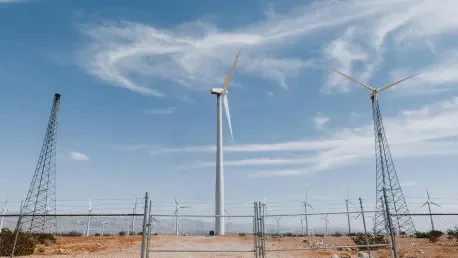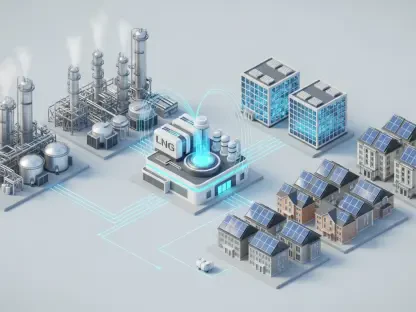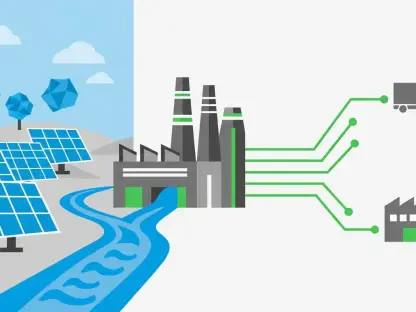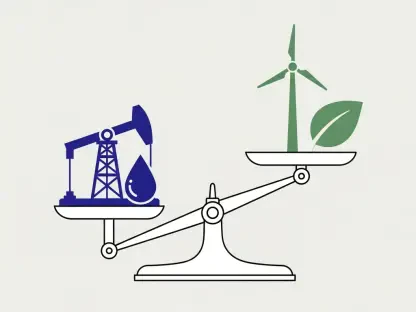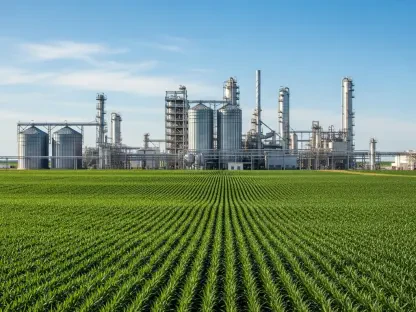I’m thrilled to sit down with Christopher Hailstone, a renowned expert in energy management and renewable energy, who brings a wealth of knowledge on electricity delivery, grid reliability, and security. With his deep insights into the evolving landscape of global power generation, Christopher is the perfect guide to help us understand the massive shifts happening in the energy sector. Today, we’ll explore the remarkable growth in global power capacity, the push toward clean energy, the persistent role of fossil fuels, and the dominant influence of Asia in shaping the future of energy. Let’s dive into this fascinating conversation about how the world’s power pipeline is taking shape.
Can you walk us through the scale of growth in global power capacity and what the addition of 1,450 gigawatts really means for meeting the world’s energy demands?
Absolutely, Silvia. Right now, the world’s power capacity sits at about 8,000 gigawatts, and with 1,450 gigawatts under construction, we’re looking at a jump to nearly 9,500 gigawatts once these projects are complete. That’s a growth of over 25%, which is massive. In practical terms, this increase can power millions of homes, support industrial expansion, and keep up with the rising demand driven by electrification—think electric vehicles and digital economies. It’s a critical step toward addressing energy needs, especially in regions experiencing rapid population and economic growth.
What’s driving the significant focus on clean energy sources like solar and wind, which make up two-thirds of the new projects?
The shift toward clean energy is largely driven by a global push for sustainability and the urgent need to cut carbon emissions. Solar and wind are now more cost-competitive than ever, thanks to technological advancements and economies of scale. Governments and private sectors are also incentivizing renewables through policies and subsidies, while public awareness of climate change pushes for greener solutions. It’s a combination of economics, policy, and societal demand that’s propelling clean energy to take up such a large share of the pipeline.
Solar seems to be leading the charge with 345 gigawatts under construction. What makes solar stand out compared to other clean energy technologies?
Solar’s dominance comes down to its versatility and declining costs. Solar farms can be deployed relatively quickly and at various scales, from small community projects to massive utility-scale installations. The technology has seen dramatic price drops over the past decade, making it often cheaper than fossil fuels in many regions. Plus, solar works well in diverse climates, especially in sun-rich areas like parts of Asia and the Americas, which are seeing a lot of this new capacity. It’s just a very accessible and efficient option right now.
Even with the clean energy boom, fossil fuels still account for a third of the pipeline. Why is there still such a heavy investment in coal and gas?
Fossil fuels, particularly coal and gas, remain in the mix because they provide a reliable baseload power that’s hard to replace overnight. Many countries, especially in developing regions, still depend on these sources for energy security and to meet immediate demand. Coal, for instance, is cheap and abundant in certain areas, while gas is often seen as a transitional fuel due to its lower emissions compared to coal. Infrastructure for fossil fuels is also already in place, so it’s sometimes easier to expand than to build entirely new systems for renewables. It’s a complex balance between short-term needs and long-term climate goals.
Asia is clearly the powerhouse in this global expansion, with 84% of new projects. What factors are behind this region’s dominant role in energy growth?
Asia’s role is staggering, and it’s largely driven by rapid economic growth and massive population centers that demand more energy. Countries like China and India are industrial giants with huge manufacturing bases and a need for both clean and fossil fuel capacity to keep up. Asia also has a strong manufacturing edge in energy components—think solar panels and wind turbines—which lowers costs and speeds up deployment. Additionally, government policies in the region often prioritize energy infrastructure as a backbone for development, so you see this incredible concentration of projects, from 99% of new coal plants to a huge share of renewables.
With clean energy expected to rise from 46% to 49% of global capacity after these projects, do you think this shift is enough to keep us on track for climate goals?
Honestly, it’s a step in the right direction, but it’s not enough on its own. Moving from 46% to 49% shows progress, especially with clean energy dominating new builds, but global climate goals—like those in the Paris Agreement—require much deeper cuts in emissions. We need clean energy to not just grow in share but to replace existing fossil fuel capacity at a faster rate. This incremental increase helps, but without aggressive policies, innovation in storage, and grid upgrades to handle renewables, we’re still behind the pace needed to limit warming.
Looking beyond the current pipeline, how do you envision the balance between clean energy and fossil fuels evolving in the coming decades?
I think the trajectory is clear—clean energy will continue to grow as costs keep falling and technologies like battery storage improve to address intermittency issues with solar and wind. Fossil fuels will likely decline in share, but they won’t disappear quickly, especially in regions where energy demand outpaces the rollout of renewables. I expect gas to play a bridging role for a while, and coal to face more pressure as carbon pricing and international agreements tighten. The key will be investment in grid modernization and cross-border energy sharing to maximize clean energy’s potential. We might see clean sources hit 60% or more by mid-century if the momentum holds.
What’s your forecast for the global energy transition over the next decade, especially with these current trends in capacity growth?
Over the next ten years, I foresee an acceleration in the energy transition, driven by both necessity and opportunity. Clean energy will likely dominate new capacity additions even more, as costs for solar, wind, and storage continue to drop. We’ll see more aggressive policy moves—carbon taxes, renewable mandates—that push fossil fuels further to the margins. Asia will remain the epicenter of growth, but I expect regions like Africa to start ramping up as well, especially with off-grid solar solutions. The big challenge will be retrofitting or retiring existing fossil fuel plants while ensuring energy access for all. If we can crack that, alongside breakthroughs in tech like green hydrogen, we could be looking at a tipping point where clean energy becomes the undeniable default.
